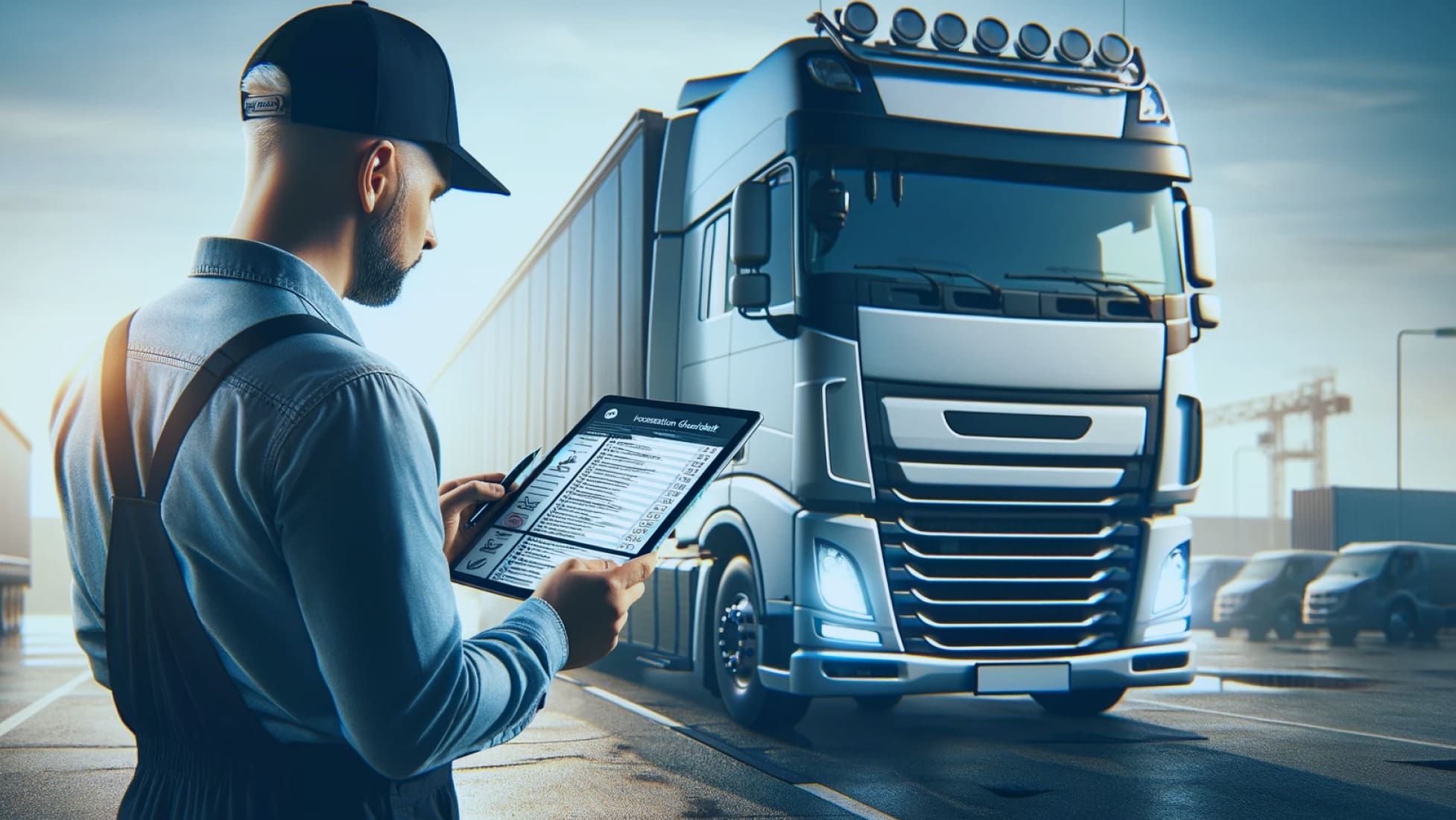Know How Heavy Vehicle Inspection Software Transforms Compliance

In the ever-evolving landscape of the transportation industry, compliance with safety regulations is paramount. With the advent of technology, heavy vehicle inspection software has emerged as a game-changer in ensuring the seamless integration of compliance protocols into fleet management. In this comprehensive guide, we will delve into the key trends in heavy vehicle inspection software and how it contributes to the efficiency and compliance of modern fleet management systems.
Understanding the Need for Heavy Vehicle Inspection Software
When it comes to managing heavy vehicle fleets, the stakes are high. Whether it’s ensuring compliance with stringent regulations or minimizing downtime due to unexpected breakdowns, the challenges are significant. In this extended discussion, we will delve into the intricate details of fleet inspection software, specifically tailored for heavy vehicles. From understanding the unique needs of heavy vehicle fleets to exploring the advanced features of inspection software, this comprehensive guide aims to provide a thorough understanding of how this technology enhances the management of heavy-duty transport.
The Peculiar Needs of Heavy Vehicle Fleets
Heavy vehicles, such as trucks and buses, have distinct operational requirements compared to their lighter counterparts. These needs stem from the sheer size, weight, and complexity of these vehicles. Fleet inspection software for heavy vehicles must address the following key considerations:
1. Comprehensive Compliance Management
Heavy vehicles are subject to a myriad of regulations and standards. From weight restrictions to emission norms, compliance is non-negotiable. Fleet inspection software tailored for heavy vehicles should have robust compliance management features. This includes automated tracking of inspections, certifications, and adherence to environmental standards.
2. Intensive Maintenance Requirements
The wear and tear on heavy vehicles are substantial, given their frequent and long-distance travels. Maintenance needs to be more frequent and thorough. Fleet inspection software for heavy vehicles must facilitate comprehensive maintenance scheduling, taking into account factors like mileage, engine hours, and historical performance data.
3. Advanced Diagnostic Capabilities
Identifying potential issues before they escalate is crucial for heavy vehicle fleets. Advanced diagnostic capabilities integrated into fleet inspection software allow for real-time monitoring of critical components. This not only prevents unexpected breakdowns but also contributes to overall fleet longevity.
Features of Fleet Inspection Software for Heavy Vehicles
Understanding the specialized needs of heavy vehicle fleets, let’s explore the features that make fleet inspection software a vital tool in their management:
1. Real-time Monitoring and Telematics Integration
Heavy vehicles often operate in challenging conditions, making real-time monitoring essential. Fleet inspection software, when integrated with telematics systems, provides instant insights into the location, performance, and health of each vehicle. This level of visibility enables proactive decision-making.
2. Predictive Maintenance for Heavy Vehicles
Given the high cost of downtime for heavy vehicles, predictive maintenance becomes a critical feature. Fleet inspection software utilizes advanced algorithms to predict when specific components are likely to fail. This foresight allows for planned maintenance, reducing overall operational disruptions.
3. Customized Checklists and Inspection Templates
Unlike light vehicles, heavy vehicles have intricate systems and components that require meticulous inspection. Fleet inspection software allows for the creation of customized checklists and inspection templates, ensuring that every aspect of a heavy vehicle is thoroughly examined during routine inspections.
4. Integration with Vehicle Health Monitoring Systems
Modern heavy vehicles often come equipped with sophisticated health monitoring systems. Fleet inspection software seamlessly integrates with these systems, aggregating data on engine performance, fuel efficiency, and emissions. This holistic approach to data analysis enhances the overall health management of heavy vehicle fleets.
5. Comprehensive Reporting and Documentation
Regulatory authorities often require detailed documentation of inspections and maintenance activities. Fleet inspection software generates comprehensive reports, documenting every inspection, repair, and certification. This not only ensures compliance but also serves as a valuable resource for historical performance analysis.
The Connection with Advanced Fleet Management Software
To truly harness the potential of fleet inspection software for heavy vehicles, integration with advanced fleet management software is imperative. This symbiotic relationship expands the scope of management to include route optimization, fuel efficiency analysis, and driver performance monitoring. The result is a cohesive ecosystem where every aspect of heavy vehicle fleet management is seamlessly interconnected.
Emerging Trends in Fleet Inspection Software for Heavy Vehicles
As technology continues to evolve, so does fleet inspection software for heavy vehicles. Let’s explore the emerging trends that are shaping the landscape:
1. Artificial Intelligence (AI) for Predictive Analytics
AI is revolutionizing predictive maintenance for heavy vehicles. Machine learning algorithms analyze historical data, identifying patterns and predicting potential issues with unprecedented accuracy. This trend is a game-changer, reducing maintenance costs and enhancing fleet reliability.
2. Blockchain for Enhanced Security and Transparency
Blockchain technology is making inroads into fleet management, providing enhanced security and transparency. In the context of heavy vehicle fleets, blockchain can be utilized for secure documentation of inspections, certifications, and even the sourcing of spare parts. This ensures data integrity and builds trust in the overall management process.
3. Augmented Reality (AR) for Remote Assistance
AR is finding practical applications in heavy vehicle maintenance. Fleet inspection software incorporating AR allows technicians to receive real-time guidance and support from experts, even in remote locations. This trend not only improves the efficiency of repairs but also contributes to the skill development of maintenance personnel.
The integration of fleet inspection software tailored for heavy vehicles is a pivotal step towards efficient and reliable fleet management. The unique needs of heavy vehicle fleets, including compliance management, intensive maintenance requirements, and advanced diagnostics, are effectively addressed by this technology.
As heavy vehicle fleets continue to play a crucial role in logistics and transportation, staying abreast of emerging trends is essential. The incorporation of AI for predictive analytics, blockchain for enhanced security, and AR for remote assistance signifies a future where heavy vehicle fleet management is not only efficient but also technologically advanced.
To truly unlock the potential of fleet inspection software for heavy vehicles, transport operators must embrace the symbiotic relationship with advanced fleet management software. This collaborative approach ensures that every facet of heavy vehicle fleet management is seamlessly interconnected, paving the way for a future-ready and resilient transportation infrastructure.
How Heavy Vehicle Inspection Software Transforms Compliance
- Real-time Reporting
One of the primary benefits of heavy vehicle inspection software is its ability to provide real-time monitoring and reporting. The software constantly tracks the condition of vehicles, alerting fleet managers to any issues that may arise. This proactive approach ensures that potential compliance issues are addressed promptly, preventing costly consequences.
- Efficient Data Management
Gone are the days of sifting through piles of paperwork to ensure compliance. Heavy vehicle inspection software centralizes data management, making it easy to access and analyze inspection reports. This efficiency not only saves time but also enhances the accuracy of compliance records, reducing the risk of regulatory penalties.
- Streamlined Inspection Processes
Traditional inspection processes often involve a multitude of paperwork and manual checks. Heavy vehicle inspection software streamlines these processes by providing digital checklists and automated workflows. This not only speeds up inspections but also ensures consistency in compliance checks across the entire fleet.
- Proactive Maintenance Strategies
The integration of AI-powered predictive maintenance into heavy vehicle inspection software transforms compliance by shifting from reactive to proactive maintenance strategies. Fleet managers can address potential issues before they lead to non-compliance, reducing downtime and enhancing overall safety.
Conclusion
In conclusion, vehicle inspection software is more than just a tool for compliance; it is a catalyst for transformation in the transportation industry. By embracing the latest trends and seamlessly integrating with advanced fleet management software, heavy vehicle inspection software ensures not only compliance with safety regulations but also the optimization of fleet operations. As the industry continues to evolve, staying ahead of the curve with these technological advancements is key to success in the competitive world of transportation.




